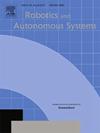Predicting elbow motion intention based on different electromyography and inertial measurement unit sensor fusion structure
IF 4.3
2区 计算机科学
Q1 AUTOMATION & CONTROL SYSTEMS
引用次数: 0
Abstract
As information on motion intention prediction methods, bioelectrical and physical signals have been commonly used. However, both types of signals have opposing weaknesses and strengths. To compensate for these limitations, many studies have fused and utilized both signal types, but they have rarely discussed how to fuse them in terms of input/output structure, despite the significant impact of such discussion on prediction performance. Therefore, in this study, we designed and analyzed various sensor fusion structures using electromyography (EMG), one of the bioelectrical signals, and inertial measurement unit (IMU) signal, one of the physical signals, and then determined an optimal structure for using in our prediction model. To predict future motion intention in advance, the concept of the response time difference between EMG and IMU signals was employed in artificial neural network (ANN) training. Various experiments with a simple motion and two various motion scenarios were conducted with three subjects to verify the effectiveness and robustness of the proposed method. The results show that proposed method can predict future elbow angles with high accuracy and performance consistency across all subjects. Furthermore, these results allow joint angle synchronization of robot and human, and consequently reduce the discomfort of the subject from a muscle usage perspective.
基于不同肌电和惯性测量单元传感器融合结构预测肘关节运动意图
生物电信号和物理信号是运动意图预测的常用方法。然而,这两种类型的信号都有相反的优缺点。为了弥补这些局限性,许多研究融合并利用了这两种信号类型,但他们很少讨论如何在输入/输出结构方面融合它们,尽管这种讨论对预测性能有重大影响。因此,在本研究中,我们利用肌电图(electromyography, EMG)和物理信号中的惯性测量单元(inertial measurement unit, IMU)信号设计和分析了各种传感器融合结构,并确定了一种最优结构用于我们的预测模型。为了提前预测未来的运动意图,在人工神经网络训练中引入了肌电和动肌信号响应时间差的概念。通过3个被试进行了简单运动和两种不同运动场景的实验,验证了该方法的有效性和鲁棒性。结果表明,该方法能较好地预测所有受试者未来肘关节角度,具有较高的准确性和一致性。此外,这些结果允许机器人和人的关节角度同步,从而从肌肉使用的角度减少受试者的不适。
本文章由计算机程序翻译,如有差异,请以英文原文为准。
求助全文
约1分钟内获得全文
求助全文
来源期刊

Robotics and Autonomous Systems
工程技术-机器人学
CiteScore
9.00
自引率
7.00%
发文量
164
审稿时长
4.5 months
期刊介绍:
Robotics and Autonomous Systems will carry articles describing fundamental developments in the field of robotics, with special emphasis on autonomous systems. An important goal of this journal is to extend the state of the art in both symbolic and sensory based robot control and learning in the context of autonomous systems.
Robotics and Autonomous Systems will carry articles on the theoretical, computational and experimental aspects of autonomous systems, or modules of such systems.
 求助内容:
求助内容: 应助结果提醒方式:
应助结果提醒方式:


